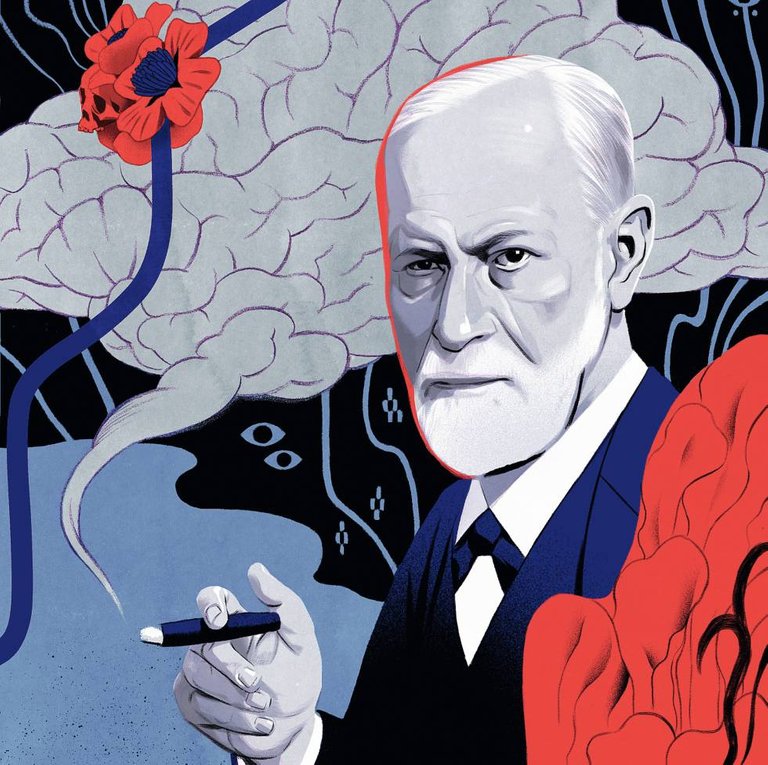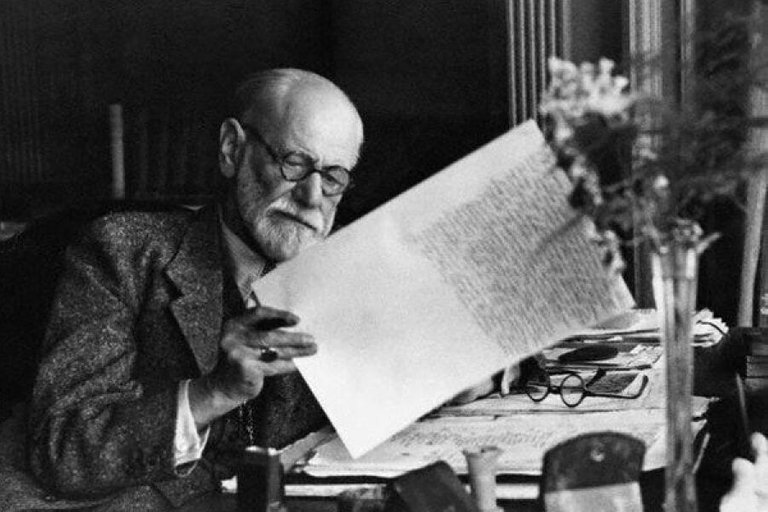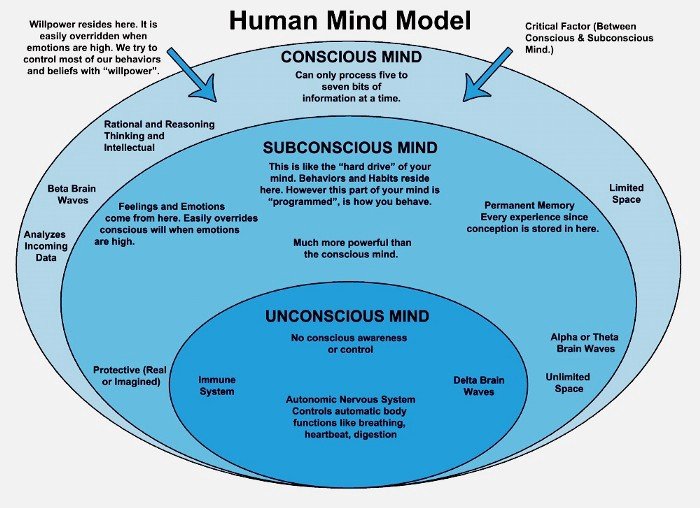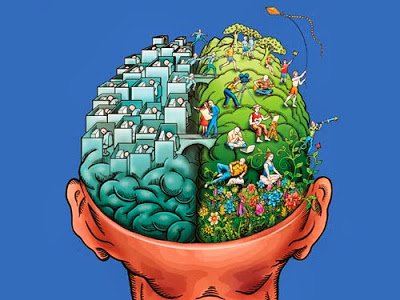El médico neurólogo Sigmund Freud, es uno de los máximos estudiosos de la mente, y parte de su trabajo lo concentró en identificar qué constituía la mente inconsciente; determinó de esta manera, que en esta se encuentran los procesos irracionales o aquellos que no son mediados por toma de conciencia, refiriéndose de esta manera a “lo reprimido”. Incluyendo así, las experiencias dolorosas, y todo lo que se rechaza porque es incompatible con la imagen que se forja, involucrando ideas, creencias, sentimientos, entre otros. También se refirió a los “complejos” incluyendo todos conflictos que ya trae el ser humano y que en esta nueva vida se enfrentarán a nuevas pruebas. Y el aspecto “creativo” como las capacidades que el humano conoce pero que olvidó al encarnar en el mundo. A partir de lo anterior vemos la importancia de entender qué está “abajo” de la mente consciente. En sentido descriptivo, lo que actualmente no es consciente, puede ser: recuerdos inconscientes que son evocados por imágenes, sonidos, y aquello que permita una asociación.
Si nos damos cuenta, desde el instante en el cual nos despertamos, nuestros pensamientos comienzan a invadir nuestro tiempo, y no dejamos ni un instante de pensar en todo tipo de cosas, pueden ser situaciones importantes o superfluidades; al levantarnos, asumimos nuestro rol, casi de manera automática, nos enfocamos en la rutina que hemos desempeñado durante algún tiempo, es lo que se conoce como “costumbre”, mientras empezamos con la rutina de todos los días, en ocasiones, no nos detenemos, a observar detalles simples tales como: observar cómo se prepara el café, la manera como nos vestimos, o nos cepillamos los dientes, incluso, a veces estamos tan centrados en nuestros pensamientos que no notamos un notorio cartel que colocaron en la avenida por la cual transitamos diariamente. Así pues, el encargado de llevar a cabo estas tareas rutinarias es el inconsciente, por otro lado, la parte consciente está ocupada pensando dónde se dejaron las llaves del automóvil o si llegará tarde al trabajo. Nuestros procesos mentales, no es otra cosa que la combinación entre los procesos conscientes y los inconscientes, interactuando de manera dinámica, en donde interviene de manera necesaria y significativa el pre consciente como mediador de aquello que queremos y lo que socialmente es aceptado para obtener eso. La parte inconsciente gestiona el 90% de lo que hacemos sin intervenir los procesos conscientes, sin darnos cuenta, en muchas ocasiones. Esta se activa para los estímulos nuevos o importantes ya que es imposible procesar todo lo que sucede a nuestro alrededor.

The neurologist Sigmund Freud is one of the greatest scholars of the mind, and part of his work focused on identifying what constituted the unconscious mind; he determined in this way, that in this are the irrational processes or those that are not mediated by awareness, referring in this way to "the repressed". This includes painful experiences, and everything that is rejected because it is incompatible with the image that is forged, involving ideas, beliefs, feelings, among others. He also referred to the "complexes" including all conflicts that the human being already brings and that in this new life will face new tests. And the "creative" aspect as the capacities that the human being knows but forgot when incarnating in the world. From the above we see the importance of understanding what is "below" the conscious mind. In a descriptive sense, what is not currently conscious can be: unconscious memories that are evoked by images, sounds, and whatever allows an association.
If we realize, from the moment we wake up, our thoughts begin to invade our time, and we do not stop thinking about all kinds of things, they can be important situations or superfluities; when we get up, we assume our role, almost automatically, we focus on the routine we have played for some time, is what is known as "habit", while we start with the routine of every day, sometimes, we do not stop, to observe simple details such as: observing how coffee is prepared, the way we dress, or brush our teeth, even, sometimes we are so focused on our thoughts that we do not notice a noticeable sign that was placed on the avenue through which we travel daily. Thus, the unconscious is in charge of carrying out these routine tasks, on the other hand, the conscious part is busy thinking about where the car keys were left or if it will be late for work. Our mental processes are nothing more than the combination of conscious and unconscious processes, interacting in a dynamic way, where the preconscious intervenes in a necessary and significant way as a mediator of what we want and what is socially accepted to obtain it. The unconscious part manages 90% of what we do without intervening the conscious processes, without realizing it, in many occasions. It is activated for new or important stimuli since it is impossible to process everything that happens around us.

La mente consciente se encarga de máximo el 3% de todos los procesos mentales y que es en la mente subconsciente es de donde viene el 97% de las creencias, pensamientos, patrones y sentimientos, afirma el biólogo y físico cuántico, Bruce Lipton en su libro “La biología de la creencia”.
Por eso, las personas no logran lo que quieren por la falta de motivación, sino porque existen patrones en el subconsciente que todavía no han sido identificados y que no les permiten materializar sus sueños. Los procesos conscientes, consumen la mayor parte de la energía que este utiliza. De esta manera, se podría decir que, el inconsciente es como un filtro que selecciona la información que resulta útil, para que la analice el consciente, y le resta importancia a lo irrelevante.
Hay una estructura, que se encarga de establecer qué es lo relevante, novedoso y aquello que merece nuestra atención, dicha estructura, es el tálamo. Este filtro, nos ayuda a evitar que nos saturemos con toda la información que hay a nuestro alrededor, y además nos permite adaptarnos dentro de nuestro entorno.
Es por esta razón, que se considera importante que podamos determinar ante que eventos, debemos estar atentos pues, es imposible que podamos percibir y analizar todo lo que percibimos, nuestro cerebro, bloquea el tacto de nuestro reloj, o de un collar, y así ni siquiera percibimos que lo llevamos puesto.

The conscious mind is responsible for a maximum of 3% of all mental processes and the subconscious mind is where 97% of beliefs, thoughts, patterns and feelings come from, says biologist and quantum physicist Bruce Lipton in his book "The Biology of Belief".
Therefore, people do not achieve what they want because of lack of motivation, but because there are patterns in the subconscious that have not yet been identified and that do not allow them to materialize their dreams. The conscious processes consume most of the energy used by the subconscious. In this way, it could be said that the unconscious is like a filter that selects the information that is useful for the conscious to analyze, and downplays the irrelevant.
There is a structure, which is in charge of establishing what is relevant, novel and what deserves our attention, this structure is the thalamus. This filter helps us to avoid being saturated with all the information around us, and also allows us to adapt to our environment.
It is for this reason that it is considered important that we can determine what events we should be attentive to, because it is impossible for us to perceive and analyze everything we perceive, our brain blocks the touch of our watch or a necklace, and so we do not even perceive that we are wearing it.

De manera frecuente, nuestro pensamiento, está dándole vueltas a situaciones que sucedieron y planificando a futuro otras tantas que tendremos que hacer, pero son pocas las ocasiones en las que nos centramos de manera conscientes en el presente. El inconsciente es el que se encarga de funciones en el momento presente, mientras nuestra mente divaga en distintos tiempos, el presente, el pasado o el futuro, se podría que este tópico, es el que nos protege del entorno en el presente, y si surge de alguna situación que genere peligro, se encarga de focalizar la atención en este para poder, para reaccionar ante éste. Entonces, la realidad termina siendo completamente distinta. Algunos ejemplos de creencias subconscientes son:
• Hay que trabajar duro para tener dinero, materializando empleos en donde tiene que esforzarse mucho.
• La vida es injusta, y crea una realidad en la que la personas no es valorada.
• Las personas no respetan a los adultos mayores, y se ve en situaciones de irrespeto. Y muchísimas más situaciones que responden a un patrón que no ha sido identificado, hasta que se le dé un espacio desde la mente consciente.

Frequently, our thoughts are thinking about situations that have happened and planning for the future, but there are few occasions in which we consciously focus on the present. The unconscious is the one that is in charge of functions in the present moment, while our mind wanders in different times, the present, the past or the future, it could be that this topic, is the one that protects us from the environment in the present, and if a situation arises that generates danger, is responsible for focusing attention on this to be able to react to it. Then, the reality ends up being completely different. Some examples of subconscious beliefs are:
You have to work hard to have money, materializing jobs where you have to make a lot of effort.
Life is unfair, and creates a reality in which people are not valued.
People do not respect the elderly, and they are seen in situations of disrespect. And many more situations that respond to a pattern that has not been identified, until it is given a space from the conscious mind.

Your content has been voted as a part of Encouragement program. Keep up the good work!
Use Ecency daily to boost your growth on platform!
Support Ecency
Vote for Proposal
Delegate HP and earn more
Congratulations @mahuampionlinemg! You have completed the following achievement on the Hive blockchain and have been rewarded with new badge(s) :
Your next target is to reach 1250 upvotes.
You can view your badges on your board and compare yourself to others in the Ranking
If you no longer want to receive notifications, reply to this comment with the word
STOPCheck out the last post from @hivebuzz:
Support the HiveBuzz project. Vote for our proposal!